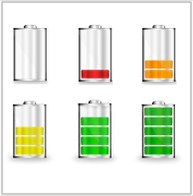Technology: Published a novel study on cheaper and more eco-friendly batteries using vinavil as a binder
30/3/2015
 Cheaper and more eco-friendly batteries for smartphones or computers, using vinavil as the key element? Soon this could be a reality, as shown by a study carried out by a group of electrochemists at the ENEA Casaccia research centre, and published on ELECTROCHIMICA ACTA, one of the most authoritative magazines of the sector.
Cheaper and more eco-friendly batteries for smartphones or computers, using vinavil as the key element? Soon this could be a reality, as shown by a study carried out by a group of electrochemists at the ENEA Casaccia research centre, and published on ELECTROCHIMICA ACTA, one of the most authoritative magazines of the sector.
This research is conducted under the national Electric System Research program, and focuses on vinavil as a water-soluble binder for lithium batteries, which are largely used in consumer electronics and since long available on the market, representing one of the most advanced electric power storage method.
Vinavil, i.e. poly vinyl acetate (PVAc), is the white glue typically used in many industrial processes; Italy is one of the major global producers of this stable, non-flammable and non-hazardous product, made of low-cost components.
“This vinavil-based technology has many advantages when dealing with ion-lithium batteries, such as lower production costs, reduced or zero impact on the environment, no pollution”, says Pier Paolo Prosini, ENEA expert researcher and developer of this technology. “Specifically, water can be used as process solvent, thus allowing to avoid VOCs (volatile organic compounds), organic solvents still currently used, and potentially hazardous for human health and the environment.”
This process could also considerably reduce or eliminate VOCs for cleaning the deposition systems, with further benefits in terms of environmental impact and costs. Finally, the aqueous electrode paste dries quickly with consequent increase in the production volumes. “Hence, many and significant are the advantages that this new process could bring in the production of batteries without affecting their performance” concludes Prosini.
Source:
Pierpaolo Prosini,
Technical Unit for Renewable Energy Sources
pierpaolo.prosini@enea.it
For more information:
